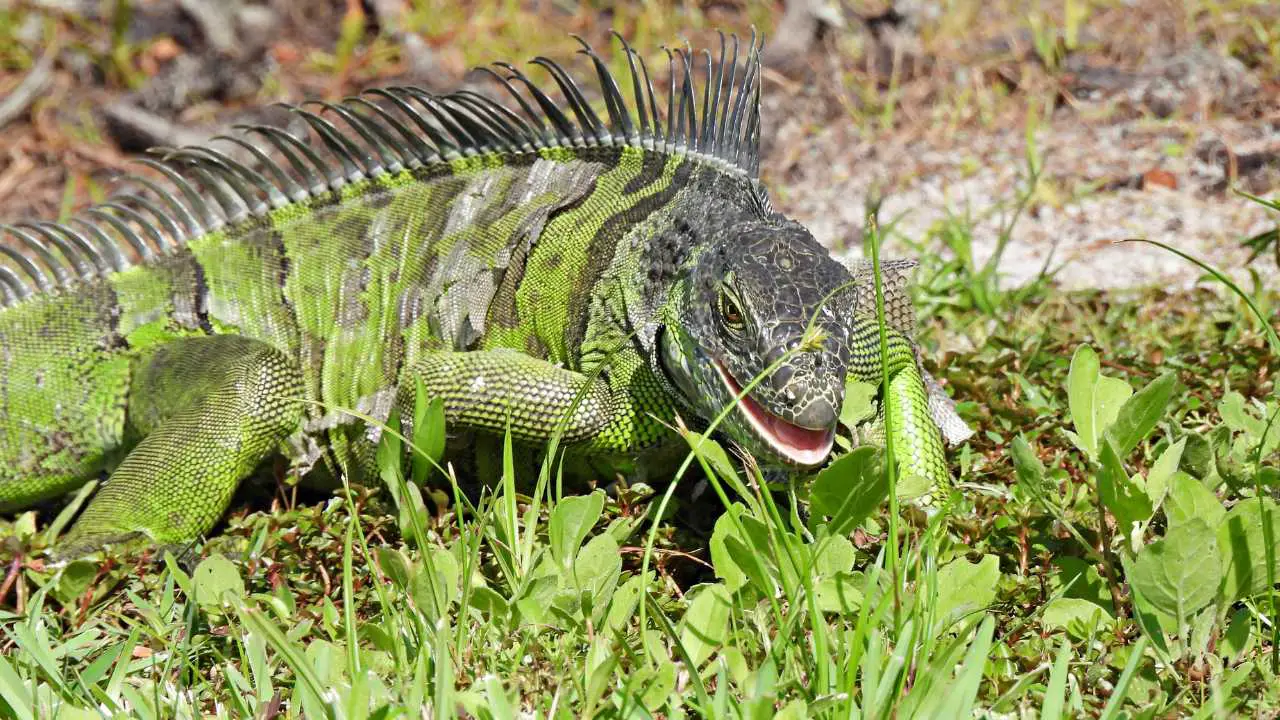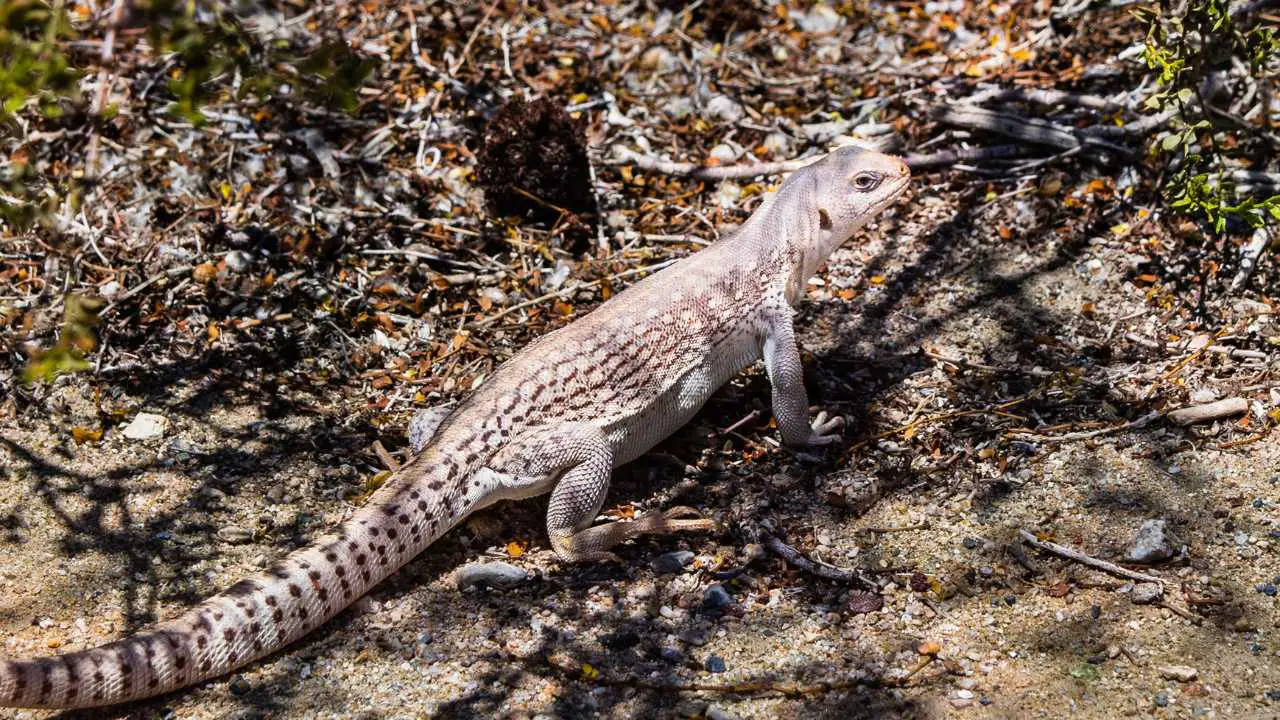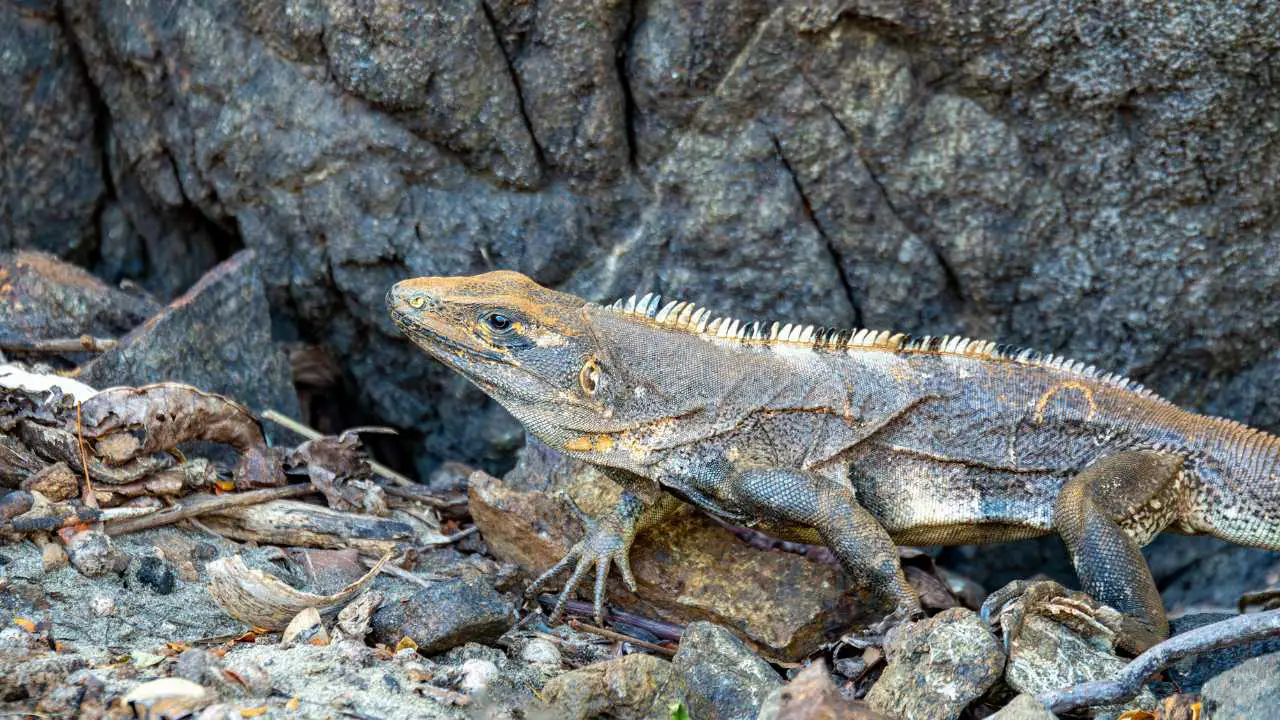Did you know that iguanas are one of the rare lizard species that can live both in trees and on ground? They are found in Southern and Central America. Iguanas are 6ft long with a weight of around 20 pounds. Some people also keep them as pets. They have a unique personality and interesting appearance. If you want to know more about iguanas, particularly what do iguanas eat, and how they are adapted to the food they eat, you’ve come to the right place. Let’s find out the dietary habits and patterns of iguanas!
What Do Iguanas Eat?

Iguanas are mostly herbivores and their diet is mainly plant-based. But, they also eat many other things to remain healthy. These include
- Dark, leafy greens
- Vegetables
- Flowers and herbs
- Wild plum
- Cactus pads
Though this is the common diet for iguanas, different iguanas consume different things. However, their diet varies because of different factors, such as availability of food or the environmental conditions they dwell in. Those iguanas who live in the wilds are mostly opportunistic, eating everything that’s available. Climatic and seasonal shifts may also impact their eating habits as such changes also impact availability, As for pet iguanas, they require calcium and vitamin supplements along with other food to ensure better health.
How do Iguanas find food?

Iguanas use their unique physical characteristics and adaptations to find food. They feed mostly on green leaves and vegetables that are obtained simply. However, some iguanas rely on a process called ‘gaping’ for getting their food. The iguana opens its mouth wide open displaying their teeth. This serves to regulate the body temperature of iguanas and also allow for better intake of plants, leaves, vegetables and any other things that iguanas consume. Also, this allows them to consume large quantities to fulfil their nutritional needs!
What do Green Iguanas eat?
Green iguanas, also known as American iguanas, eat green plants, fruits, and flowers. Wild plum is the green iguana’s favorite food. But, on rare occasions, they may also eat eggs, insects, and snails.
What do Desert Iguanas eat?

Desert Iguanas and Chuckwalla iguana, commonly found in Mojave and Sonoran deserts, eat fruits, buds, and leaves of local plants. One of the favorite things of desert iguanas is the yellow flowers found on the Creosote bush.
What do Marine Iguanas eat?

Marine iguanas reside on the Galapagos islands and are the only lizards to reside in the ocean. They feed in shallow ocean waters and consume marine algae growing underwater and on rocky shores.
What do Spiny-Tailed Iguanas eat?

Furthermore, spiny-tailed iguanas are native to Central America but are also found in Colombia, Honduras, and South Florida. They feed on meat, stems, fruits, and flowers.
How much does an Iguana eat?
The amount of food an iguana consumes depends on species, age, and size. A young iguana will typically eat more than an adult, as it needs more to grow. Most of their diets consist of leafy greens and vegetables.
What Do Pet Iguanas Eat?
Iguanas are difficult to handle as some species are large and require spacious places, which can be a challenge. Apart from the hefty accommodation problem, they consume large amounts of food to survive, mostly fresh greens, vegetables, and fruits. In the case of omnivorous species, they also must consume a considerable amount of insects to acquire the necessary protein to survive in captivity. Though some people still pet iguanas, it is a difficult task.
Are All Iguanas Herbivorous?
Yes, iguanas are herbivores. There are around 40 species of iguanas and all are herbivorous. Though plants form the main part of their diet, some species may eat small insects or other animal debris. This is due to the fact that iguanas have a digestive system specialized for their diet that helps them acquire the maximum amount of nutrients from their food.
How do iguanas search for food?
Iguanas possess good vision and a sense of smell. Using these senses, they can locate the prey by its fragrance and then catch it. They can also monitor movement and fluctuations in light patterns owing to a specialized eye called parietal eye located on top of their skull. These impressive skills help them to reach their food sources. Iguanas engage in an activity while finding food that is called “gaping,” which entails opening their lips wide to take in more sensory data from their environment.
Who feeds on iguanas?

The major predators of iguanas are snakes. Desert iguanas are attacked and eaten by venomous snakes, but green iguanas are fed upon by boa constrictors. Also, mammals like foxes and raccoons feed on iguanas apart from birds like raptors and eagles. Ultimately, the specific predators that iguanas face might be different based on the area and environment in which they live. In response to that, iguanas have developed certain adaptations to avoid their prey, The most common technique is called cryptic coloration. As their body color resembles the green environment they live in, they stop movement as soon as they sense prey to avoid being noticed. Young iguanas mostly live in groups and employ the ‘selfish-herd’ strategy. They gather on tree branches that are close to water bodies so they can jump in water in case of an attack. Apart from these, an iguana can also shed a portion of its tail if a predator gets hold of it. This distracts the predator and allows the iguana to escape.
What can iguanas not eat?
Some foods are detrimental to an iguana’s health and should not be eaten. These foods are not good for the health of iguanas as they might possess substances that can be toxic or harmful.
- Avocados: Avocados contain persin, a fungicidal toxin, which can negatively impact the gastrointestinal tract of iguanas.
- Animal protein: Animal protein can be bad for an iguana’s metabolic system because the kidneys of iguanas cannot excrete such a large amount of protein.
- Insects: Insects are not a good choice for iguanas as they pose a risk of entry of parasites and pathogens in the body that may cause infections.
- Citrus fruits: Citrus fruits are highly acidic and if consumed by iguanas can cause irritation in the digestion system. It can also upset the delicate bacteria in the gut of bacteria.
- Spinach and Rhubarb: Some foods that contain oxalic acid such as spinach and rhubarb prevent the absorption of carbon in an iguana’s body that can cause metabolic diseases.
Do iguanas eat raw meat?
No, Iguanas do not consume raw meat. Being mostly herbivores, their primary sources of nutrition are fruits, vegetables, and leafy greens. Although, when in the wild, they might sometimes eat small insects or other invertebrates.
Can iguanas eat bread?
No, iguanas shouldn’t eat bread, as fruits, vegetables, and leafy greens compose most of their diet. Bread might be difficult for them to digest and is not a natural part of their diet. Nutritional shortcomings and stomach problems may result from its intake. A diet that satisfies the nutritional requirements of iguanas is important.
Do iguanas eat rats?
Yes, iguanas eat rats. There are a few iguanas that have a slight inclination towards a carnivorous diet and might eat small rodents, rats, and other such animals, but they do not eat that, mostly. They tend to consume them in environments where their primary food sources are scarce or when they are kept captive and their requirements are not being satisfied.
What is an iguana’s favorite food?
An iguana’s favorite food is mostly vegetation. Leafy greens, vegetables, and flowers are just some of the many plants that these reptiles eat. Leafy vegetables like lettuce, kale, and Swiss chard are sometimes favorites. However, this might differ based on the specific iguana and its environment. Apples, strawberries, and bananas are among the fruits that iguanas love. To preserve an iguana’s health, it’s important to supply it with diverse food.









